A Bike for Ygritte
Hey Throners, remember Ygritte? Whose life ended with an arrow? Sad, that. But life goes on. (Except for Ygritte.) Let’s talk about Ygritte’s bike.
In the circle drawn inside the chart below we find Slowtwitchers with a Pad Y and X of 570×450, and 572×448, and these are “krull_etc" and “Eileen" respectively. To tell you how much of an exact science this is NOT, notice the two pro women who have almost identical positions just above the two Slowtwitchers. These women are, in stature, 5’4” and 5’7”. How can they both have the same bike position?
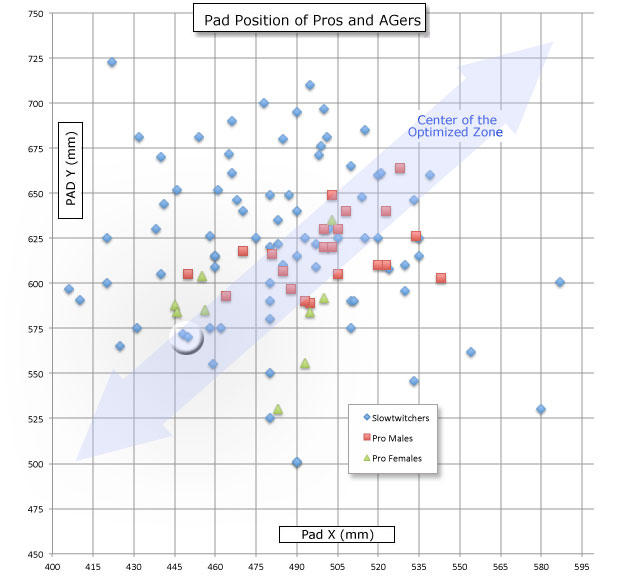
Well, they don’t have the same position. They share the same Pad Y and X. One (Liz Blatchford, riding the BMC) is taller, but rides with more aerobar drop and rides very compact. The other (Rachel Joyce, riding the Cervelo P5) is shorter, but rides with less drop and more stretched in the cockpit.
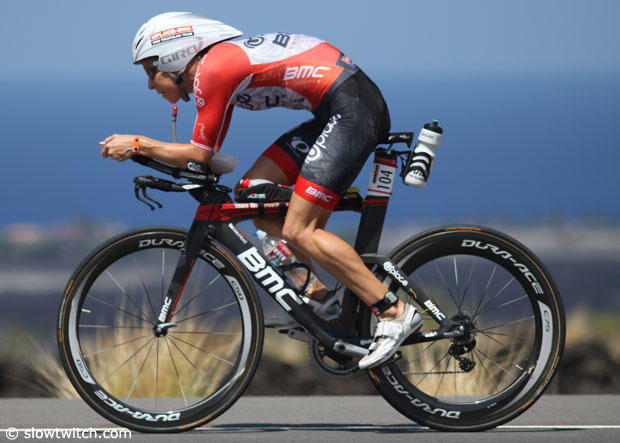
The certainly wouldn’t ride the same saddle height! But if these ladies traded bikes, adjusted their seat posts and saddle fore/aft to suit, they could ride each others’ bikes without much drama.
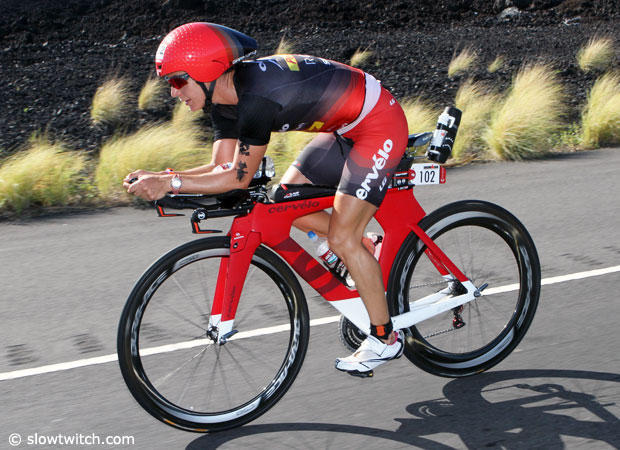
The green triangle just to the right of these women, in the chart, we see Angela Naeth. Were Angela a Game of Thrones character she would be the Queenslayer, at least when she’s aboard a bike. If you look at her position (below), there’s not much to criticize. Why then isn’t she in the center of that blue band in the chart above? Maybe she’s slightly taller of leg, shorter of torso, that pushes her pads slightly higher versus their distance in front of the BB. Maybe my arrow isn’t precisely drawn (it was an arbitrary choice). Maybe Angela measured her pads slightly inaccurately when she gave me her Pad Y/X.
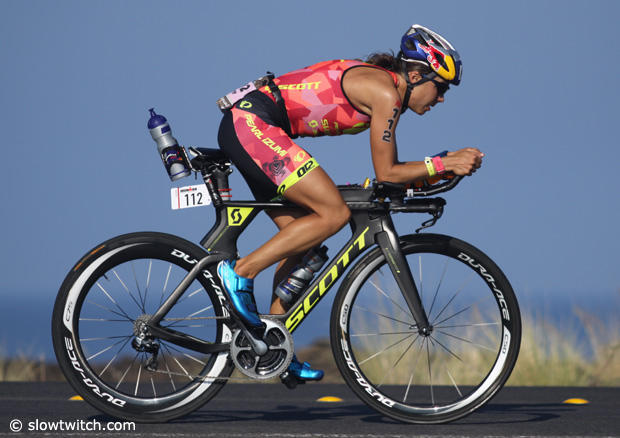
The chart isn’t meant to be parsed that closely. But it does have value when you stand back. That’s when you can see the trends, specifically the micro-variance but macro-conformity of pros. Also note that tri is either ahead of or behind the road bike industry in that tri doesn’t recognized a morphological difference between men and women. There are no women’s tri bikes. There are simply smaller tri bikes. What we also have in triathlon is true proportionality in bikes: as they get smaller, they get smaller uniformly, including wheel size (though there are not as many of these smaller-wheeled bikes as I would like to see). In this sense both tri and MTB understand something that the road market simply has failed to accept, and that is in my opinion why we have such screwy women’s bike geometries for road.
Women’s geometries, road and tri, is a subject for another time. For now, let’s just hone in on what Ygritte – er, krull_etc and Eileen – can easily ride. And may I underscore here that Eileen, unless I miss my guess, is a woman and krull_etc is a man. What they need are appropriately sized bikes, that fit and handle well, not bikes made and marketed for men or women.
We’re looking for bikes that end up with the Pads, top-center, sitting at 570mm above the BB and 450mm in front of it. Yes, that’s krull-etc’s bike, but Eileen is within 2mm in each axis of this and the body isn’t sufficiently proprioceptive to tell the difference. They have practically identical positions in the front end, just as do Rachel Joyce and Liz Blatchford. Let’s go though a few.
TREK SPEED CONCEPT, XS Look at the screenshot of Trek's chart below. I've overlaid blue bands, one horizontal and one vertical, and the intersection is the bullseye for our Slowtwitchers. This one’s pretty easy: medium-far stem, 15mm pedestal (with the 5mm wing spacer underneath), you’re pretty much there. you’ve got to push the pads forward 10mm or 15mm from their neutral spot.
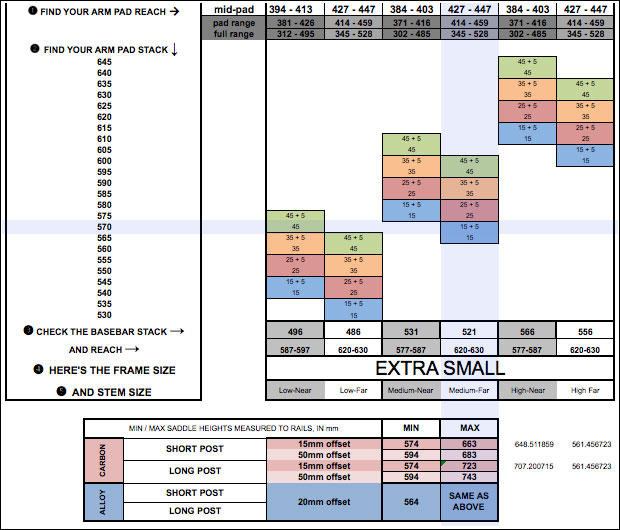
TREK SIZE-S: But not so fast! If we go to Trek’s chart for the S, we have a solution there too. Now it’s the low-far stem, 25mm pedestal, and now the front-end is very slightly too long (by less than 10mm). Which is best? I don’t know. If we were to consider the two female pros we spoke of above who are not this X/Y but who are not too far off, in a situation like this I’d probably but the taller pro on the S and the shorter pro on the XS.
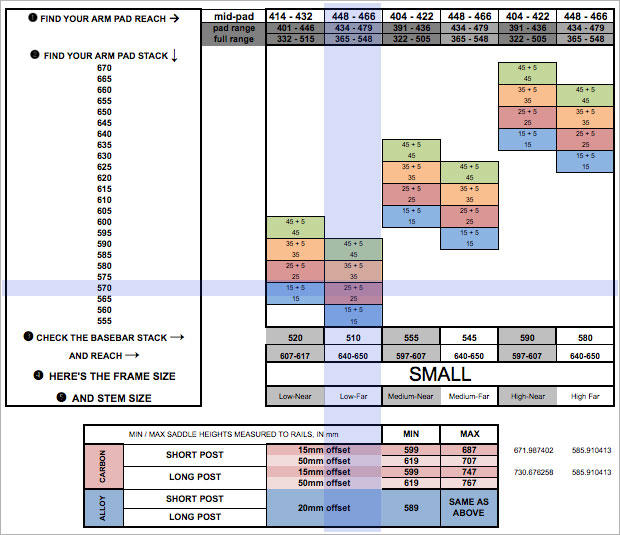
ORBEA: Did you see the article on the front page of earlier today, announcing Orbea’s new Pad XY chart? Here it is, with a red square overlaid where Pad Y and X are 570mm and 450mm. Size XS, very close to 90mm of stem and 20mm of pad pedestal to make this dog hunt.
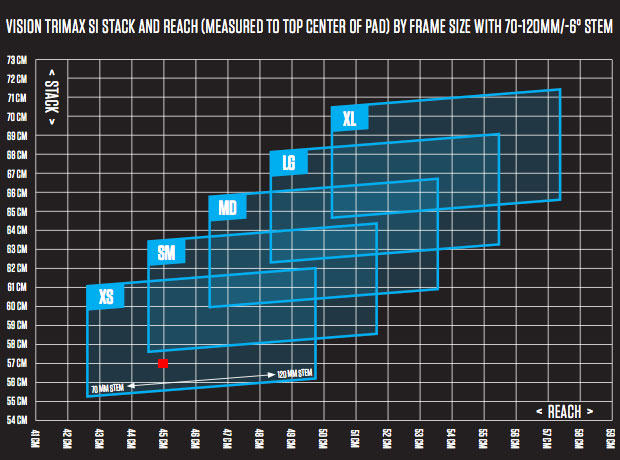
GIANT: A new Giant Trinity Advanced Pro would fit you in a size XS. Slap 20mm of pad pedestal and we’re good to go. Remember, the Giant solver measures to pad rear, so, you would add – what? – 40mm to get to pad center? That’s about average. If we start with 450mm as pad center, subtract that 40mm to get to pad rear, we end up with 410mm. The range for this bike is 403mm to 463mm. The bike seems a little long, and it is. it’s got a frame reach of just shy of 400mm and the other bikes that “fit” are more in the 385mm neighborhood. Still, this would be a fine choice.
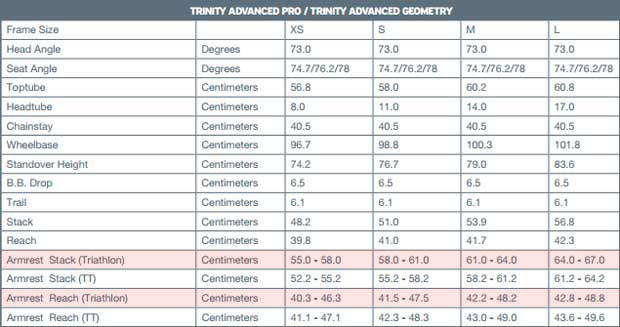
FELT IAx: This company has it’s own Excel-based calculator based on Pad XY. In an IAx, it’s a size-48 all the way, either with 10mm of pad pedestal for the aluminum aerobar or 20mm with the carbon aerobar (the model determines which bar you get).
CERVELO P2: When you calc this out, using the Profile Aerobar that comes standard on this bike, a 90mm, -17° stem, with 10mm of headset top cap and no pad pedestals, gets you very close. This is easily calculated with the HX/HY Calculator on Slowtwitch, and a fitter who knows how it’s used.
ARGON18: Let’s take the E-117 as an example. The stack and reach of this bike in size XS is very close to the P2 in size-48cm. Same prescription, assuming the aerobar pad height and setback is similar to the Profile. As that bar’s spatial relationship differs between the pads and the handlebar clamp, adjustments must be made.
And so it goes. Here’s what happened in real life. krull_etc walks into his LBS and gets sold a 51cm P2 because, of course, at 5’8” he should be a 51cm. Right? But it doesn’t calc out that way. All the frames he fits on well have a stack and reach of about 490mm and 385mm respectively.
I asked krull_etc what he’s got on that bike, and it’s a –25° stem, a non-OE bar and I’m sure it fits and rides just fine. Just, you don't have to money around with your bike to get it to fit if you do the analysis beforehand and select your bike via some reason other than guesswork.
Moral of the story: Math is your friend. The analysis above is available to any fitter, any bike salesman, any end user.


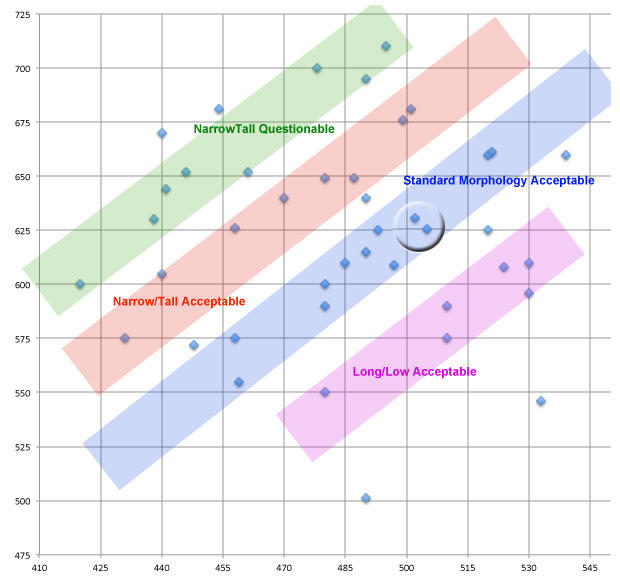
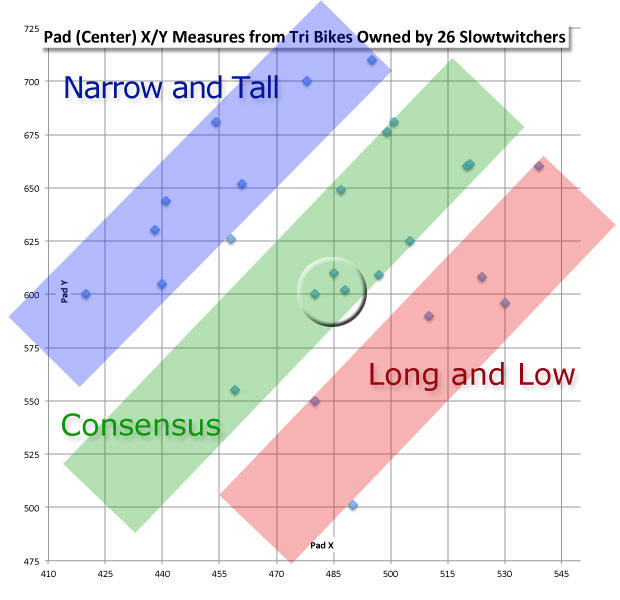
Start the discussion at slowtwitch.northend.network